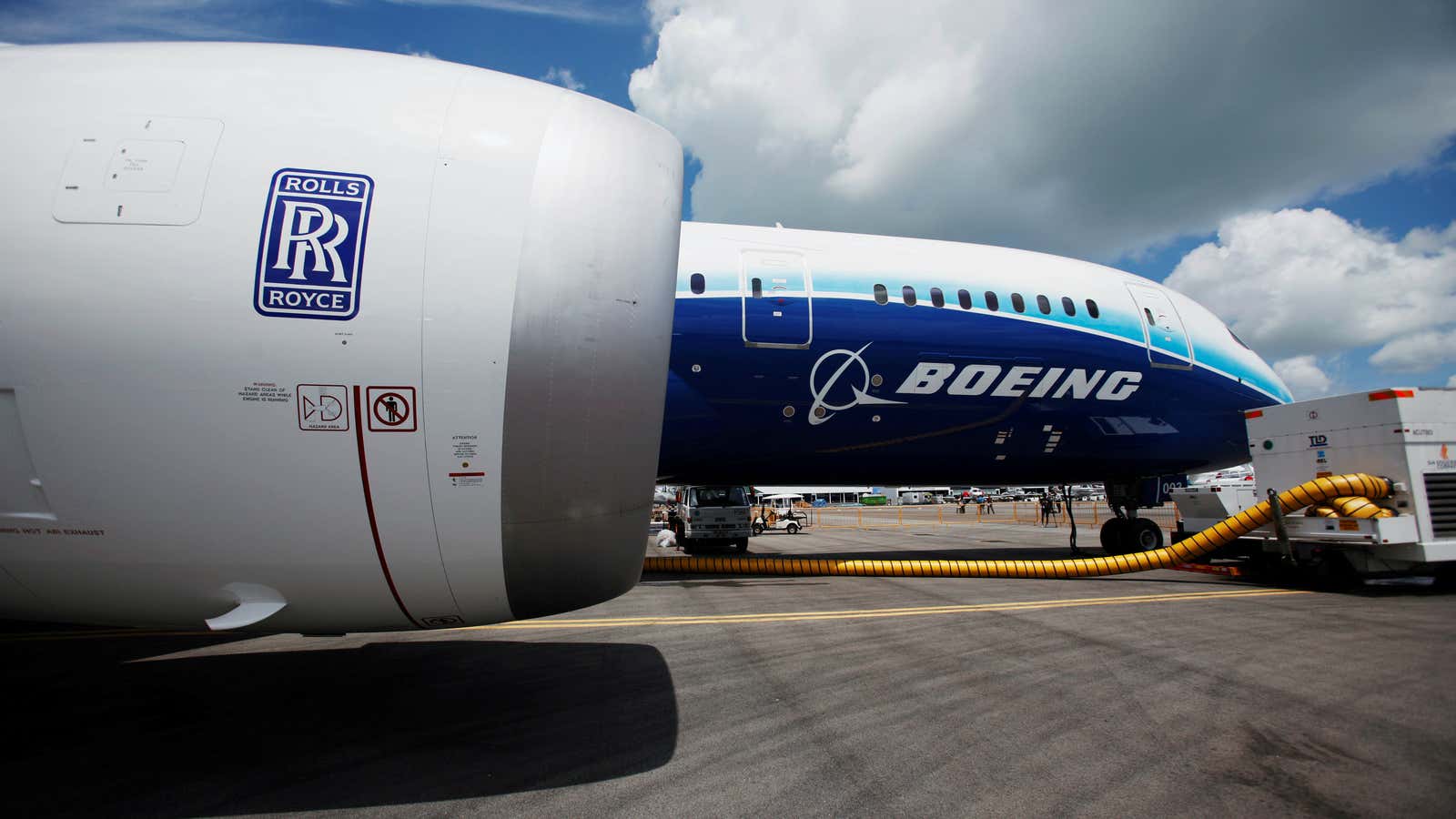If you’re looking to fly transatlantic this summer, there are no shortage of deals to help you get you there. But, if you’ve booked a flight on a Boeing 787 Dreamliner, there’s also something to watch out for: aircraft switches, longer flight times, and even canceled flights. This is all thanks to a fault in the engine used by some 787s.
Despite the engine snag, Boeing’s Dreamliner has become somewhat of a darling of the aviation industry of late. The aircraft’s lightweight, composite material and impressively long range have fueled the industry-disrupting success of low-cost, long-haul carriers like Norwegian Air. And while the engine fault in question is not an issue with Boeing’s engineering—it’s caused by a durability issue in the Rolls Royce manufactured Trent 1000 engine, which causes faster-than-anticipated wear and tear—some airlines that have invested heavily in the Dreamliner’s promise of long range at a low fuel cost are feeling the pinch.
It’s important to note, though, that passengers needn’t worry. Aerospace industry analyst and Aviation Week columnist Richard Aboulafia told Quartz that “there is no risk here to flyers, only inconvenience and expense for airlines and suppliers.”
That inconvenience is taking a few forms. Last month, the FAA issued more restrictive guidance on how far a Dreamliner with a Trent 1000 engine can be flown from an a “safe diversion point”—or airport where it can make an emergency landing—limiting it to 60 minutes. This means that some flight times will increase, as pilots alter routes to adhere to the FAA’s ruling. Meanwhile, airlines must reduce the frequency of their flights while they carry out time-consuming inspections or they must find another aircraft to pick up the slack. (Rolls Royce released a statement this week saying they were working closely with airlines to “minimize any operational impact of these inspections.”)
There are 12 airlines affected, with the three leading transatlantic carriers—British Airways, Norwegian, and Virgin Atlantic—among them. Some, like Norwegian, are “wet-leasing” planes to keep up their normal service. This means passengers fly an unmarked aircraft with a non-Norwegian crew (the Portuguese airline Hi Fly has made a business model out of wet leasing). Others are cancelling flights altogether or refurbishing older—non Boeing-787—airplanes. Virgin Atlantic just announced that they will lease four Airbus A330-200, but give them a Virgin-branded makeover, in the hope that passengers won’t notice the difference.
So why should travelers care? If your flight doesn’t get canceled, you will still get to your destination, but the quality of your journey and the amenities promised—from entertainment options to food—may differ. Your author recently flew on a wet-leased Norwegian Air flight from London to New York, operated by Hi Fly. While it wasn’t the worst flight I’ve ever taken, it certainly was not the slick, well-lit, well-pressurized experience of flying on a Dreamliner.
If you’re booking an upcoming flight on one of the above airlines, be on the lookout for any mention of flights “operated by” another airline and pay attention to the aircraft type your flight will be operated on. If you can get yourself on a Dreamliner for a long-haul flight, the start of your vacation will be the better for it.
